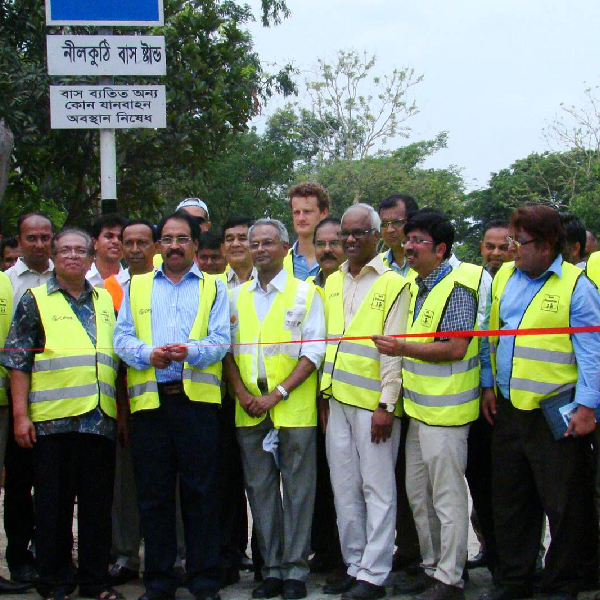
The centre through the PRECISE programme generated evidence that injury is preventable even in low resource setting Bangladesh. However road traffic injuries (RTIs) require further attention to improve the current horrifying situation.
The United Nations General Assembly has proclaimed the period 2011-2020 as the Decade of Action for road safety. According to the World Health Organization 1.3 million people are killed due to RTIs globally each year, 50 million people are injured and many are disabled as a result. Over 90% of these casualties occur in LMICs.
Every year around 80,000 children aged 5-14 years in developing countries lose their right to education for a single tragic reason – they are killed on the world’s roads, often making the journey to school.
The exact statistics of RTIs in Bangladesh is not available. Data compiled from police reports shows that 3,160 deaths occurred in 2006. However the annual estimated RTi deaths from the Bangladesh Health and Injury Survey was found it to be over 13,000. Another official statistic suggests that Bangladesh has one of the highest fatality rates in road accidents, which is over 100 death per 10,000 motor vehicles, and 70% of road accident fatalities occur in rural areas.
The Bangladesh Road Safety Council, Bangladesh Road Transport Authority, Accident Research Institute of BUET, along with several NGOs are active in managing and reducing RTi’s. Recently the CIPRB launched the “RTi Research Centre” with a vision to make the community free from road traffic injuries by implementing evidence based interventions.
The activities of the centre include;
“Road Safety Demonstration Project: Speed management and Safe Crossings on N2 Highway”
Together with the Dutch non-profit Safe Crossings (www.safe-crossings.org), Centre for Injury Prevention and Research, Bangladesh (CIPRB) is improving road safety in Bangladesh. Road safety is one of the leading causes of death with an estimated number of deaths of 20,000 per year. Improving road safety will not only avoid personal misery but also lead to social, economic and health benefits for the country.
Safe Crossings and CIPRB have identified three dangerous locations i.e. locations where many road crash occur across the N2 highway between Dhaka and Sylhet. At these locations an integrated program consisting of both highway interventions (like speed humps, separate bus bays and pedestrian crossings), awareness raising and school education is being implemented. The communities living around the locations are involved in the program to ensure a long term change.
An extensive research program has been set up to measure the impact of the interventions. The expectation is a reduction in accidents by at least 50%. After this pilot, we aim is to roll out the program on a large scale in Bangladesh.
Piloting the Safe Child Pedestrian project
The Safe Child Pedestrian project has been initiated as a pilot project at Raiganj, Sirangaj.The project was officially launched in March 2012 by the RTi Research Centre. The Safe Child Pedestrian is a practical child pedestrian training scheme, which was adapted from the Kerbcraft programme in the UK.
The Kerbcraft program is designed to train children aged 6-9 year on pedestrian skills, by means of road-side practical training rather than in the classroom. To measure the feasibility and acceptability of the original Kerbcraft programme in our country, just one skill has been selected – choosing a safe place to cross the road.
To pilot the Safe Child Pedestrian project a panel of twelve teachers from six schools of Raiganj received a two-day training course. The training includes skills involved with safe road crossings and how to carry out a safety audit and ensure the safety of the teachers and students. These skills were taught to the selected children in a road environment near to their schools. The children were divided into groups and each group consisted of three students. Each group received hands on training from the teachers.
The effectiveness of the Safe Child Pedestrian project will shortly be evaluated. If the piloting suggests that the project is feasible and acceptable the “RTi Research Centre” will scale upthe intervention throughout CIPRB project areas.